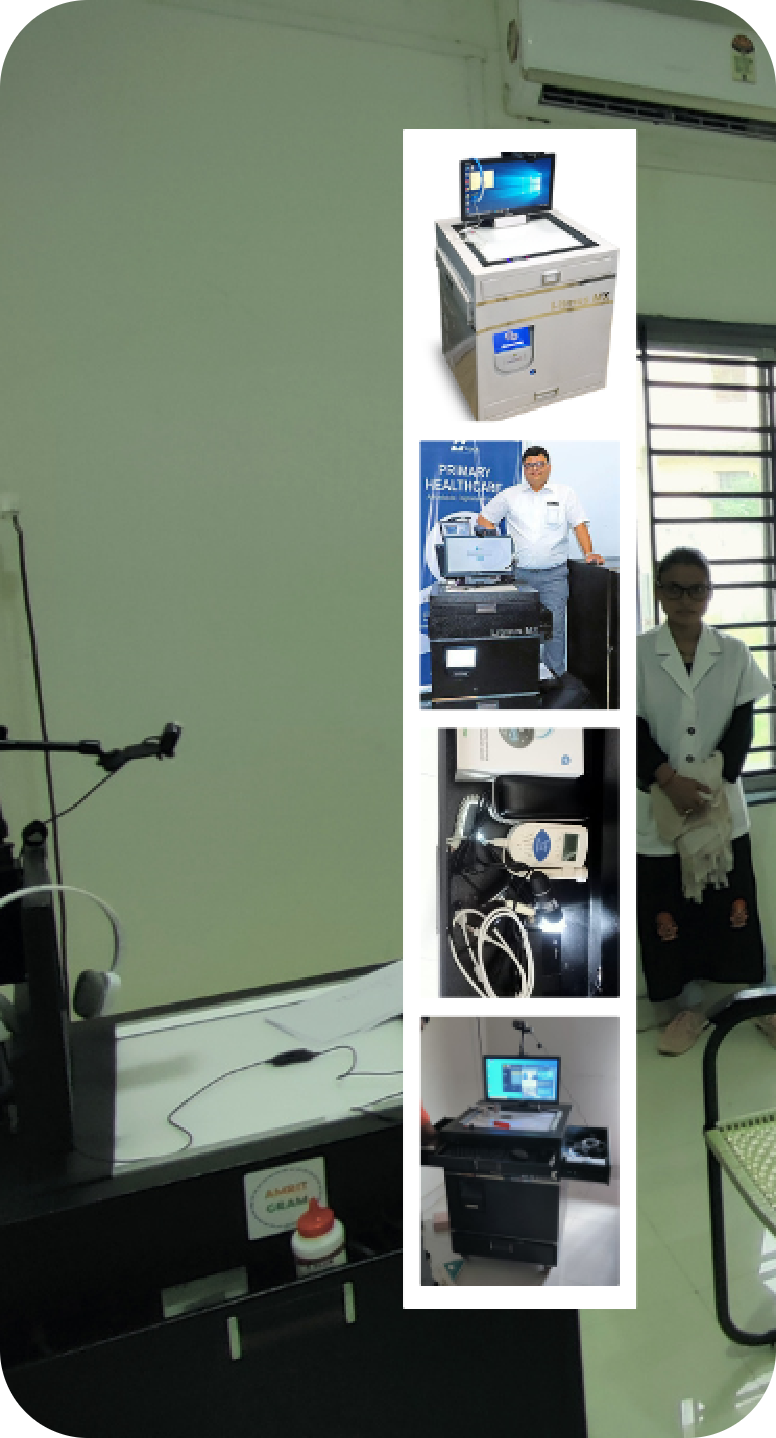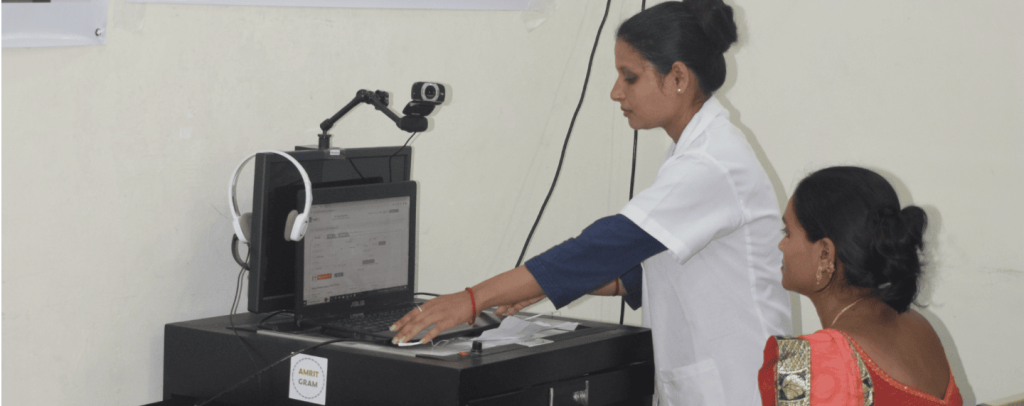
One of the central goals of the healthcare intervention within the Amrit Gram Project is to enhance primary healthcare access. This intervention recognizes that accessible, high-quality healthcare services are fundamental to improving rural communities’ well-being, longevity, and overall quality of life.
Under Healthcare, as an intervention, Amrit Gram is working on the following:
E-healthcare, leveraging digital processes and technology, offers improved accessibility, cost efficiency, and patient empowerment. By 2025, telemedicine could save India up to $10 billion annually, reducing travel costs and hospital visits. E-healthcare empowers patients to participate in healthcare decisions, improving treatment adherence rates by up to 16%.

India’s rural healthcare system is grappling with multifaceted challenges. Statistics indicate a vast disparity in the doctor-to-patient ratio in rural India, which stands at 1:30,000 – a stark contrast to the World Health Organization’s recommendation of 1:1,000. This, coupled with infrastructural inadequacies and the lack of e-healthcare, exacerbates the healthcare crisis in these regions. Below we delve into the specific issues and propose potential solutions.

The alarmingly high doctor-to-patient ratio in rural India underscores a severe shortage of healthcare professionals, leading to delayed or inaccessible treatment.

Rural India’s healthcare infrastructure struggles to provide timely and accurate disease diagnosis, which can result in worsening health conditions and potential complications.

The unavailability of e-healthcare in rural areas obstructs the implementation of preventive care and health education initiatives, further delaying disease detection and treatment.




We believe that together, we can make a real impact. Join us today and take a step towards building a better tomorrow!

Rite Water is excited to introduce Amrit Gram™, a ground-breaking concept aimed at creating self-sufficient, self-sustaining, and future-ready model villages in India, to the recipient. This initiative is aligned with the vision of the Honorable Prime Minister of India, Shri Narendra Modi, for a utopian golden period in India called “Amrit Kaal.”
© 2023 Amrit Gram. All rights reserved.